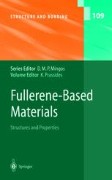Search
Search Results
-
Immobilization of Nucleic Acids Using Biotin-Strept(avidin) Systems
There are several advantages for using biotin-streptavidin/avidin (strept(avi-din)) systems to immobilize nucleic acids and other molecules. These...
-
Immobilization of DNA on Microarrays
Microarrays are new analytical devices that allow the parallel and simultaneous detection of thousands of target compounds. Microarrays, also...
-
Impedimetric Detection of DNA Hybridization: Towards Near-Patient DNA Diagnostics
Immobilization strategies for the attachment of nucleotide probes to both microarrays and microfabricated interdigitated electrodes differ to...
-
Radiopharmaceuticals for Positron Emission Tomography Imaging of Somatostatin Receptor Positive Tumors
The targeting of somatostatin receptors in tumors has been a goal in cancer treatment and diagnosis since the 1980s. Over the past two decades, great...
-
Fluorescence Correlation Spectroscopy with Autofluorescent Proteins
Fluorescence correlation spectroscopy (FCS) is a versatile technique operating at the single-molecule level, that successfully meets many challenges...
-
The Tensile Strength of Polymer Fibres
A theory of the tensile strength of oriented polymer fibres is presented. From an analysis of the observed fracture envelope it is shown that the...
-
Templated Synthesis of Interlocked Molecules
Mechanically interlocked molecular compounds can be synthesized in high yields by using template-directed assistance to covalent synthesis. Catenanes...
-

-
Solid Sulfur Allotropes
Sulfur is the element with the largest number of solid allotropes. Most of these consist of unbranched cyclic molecules with ring sizes ranging from...
-
Hydrogen-Bonded Supramolecular Chain and Sheet Formation by Coordinated Guanidine Derivatives
The formation of hydrogen-bonded supramolecular 1-D chains and 2-D sheets by planar metal-containing centres co-ordinated by members of the family of...
-
The Jahn–Teller Effect and Fullerene Ferromagnets
The discovery of C60 and other members of the fullerene family opened new horizons in the design and synthesis of new molecular-based materials. The...
-
Polymeric Fullerene Phases Formed Under Pressure
Fullerenes, in particular C60, can form covalent intermolecular bonds (“polymerize”) when treated at high temperature under high pressure. This...
-
Molecular Imprinting: State of the Art and Perspectives
Molecular recognition is central to how biological systems work. The molecular imprinting technique is a valuable polymerisation method for preparing...
-

-
Bacteriophage fd: exactly how flexible?
The particles from filamentous bacteriophages are generally considered to be flexible. This assumption originally arose from the observation of...
-
Synthesis and Reactivity of Zirconium–Silene Complex
When Cp2ZrCl2 was treated with 2 equivalents of Me2PhSiLi, a zirconium–silene complex was formed. In the presence of alkyne, diarylalkyne reacted...
-
Synthesis and Reactivity of Zirconaaziridines
η2-Imine complexes of zirconium, or zirconaaziridines, have attracted attention as amino carbanion equivalents. They can be prepared from an amine...
-
Template-Controlled Synthesis in the Solid-State
The application of molecular templates to direct reactivity in the solid state is described. Specifically, molecules that function as linear...
-
Rhenium and Technetium Complexes Anchored by Phosphines and Scorpionates for Radiopharmaceutical Applications
This review presents a comprehensive overview of the most significant developments in the chemistry of technetium and rhenium complexes anchored by...
-
Supramolecular Organization of Foldable Phenylene Ethynylene Oligomers
This review summarizes the supramolecular organization of foldable phenylene ethynylene (PE) oligomers and polymers. m-Phenylene ethynylenes (mPEs)...
